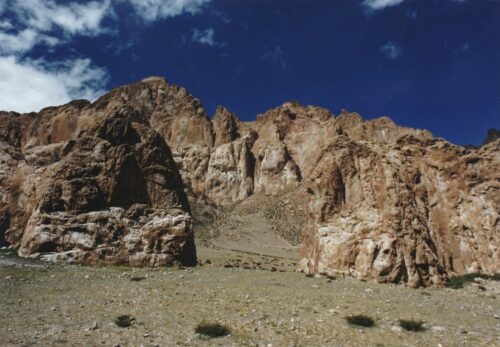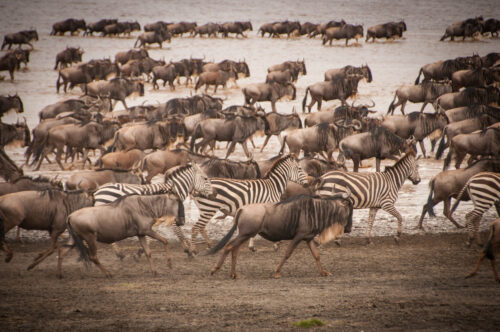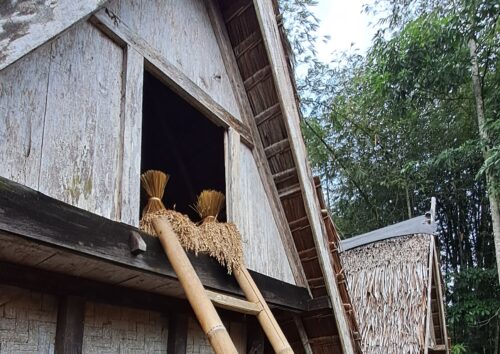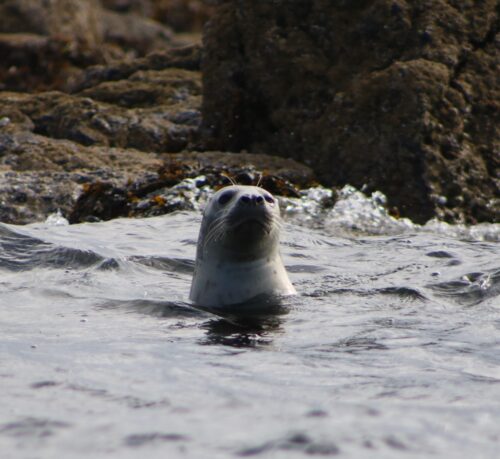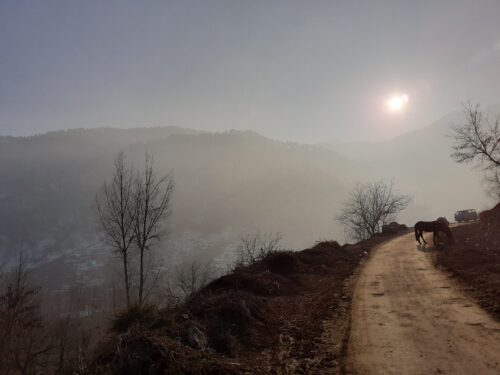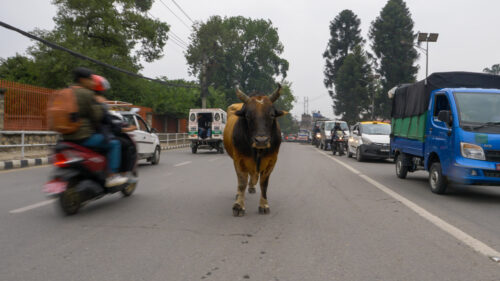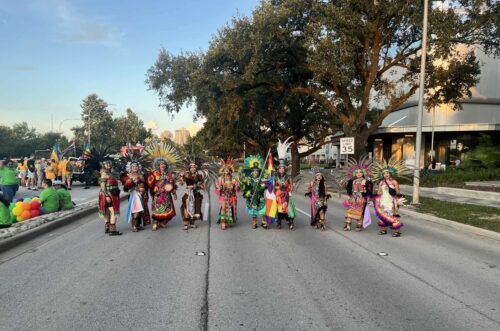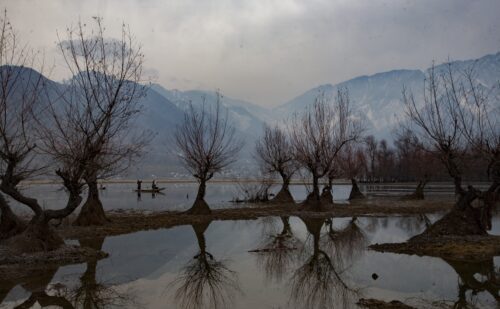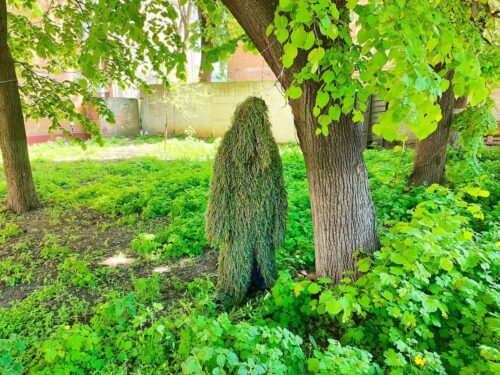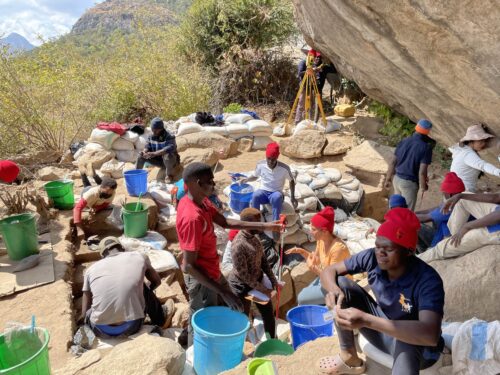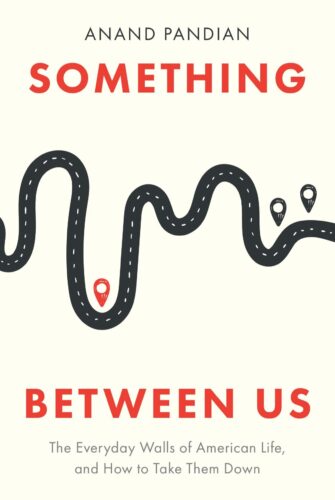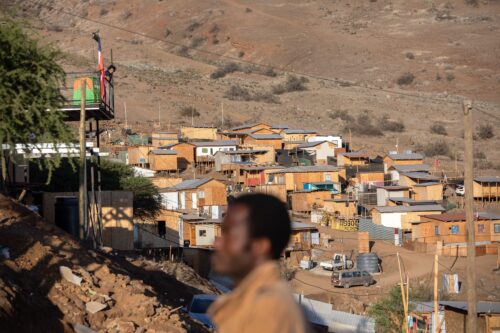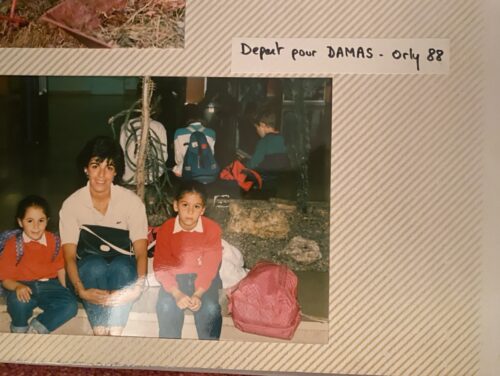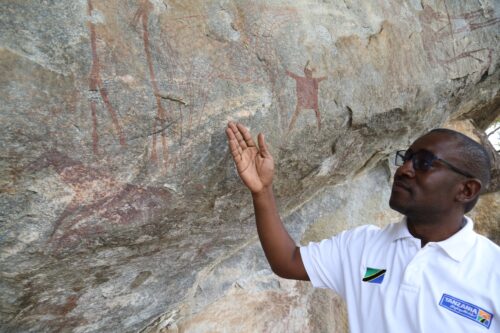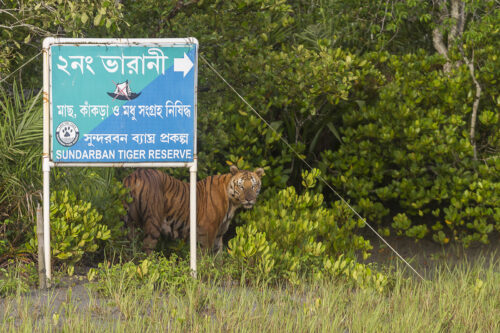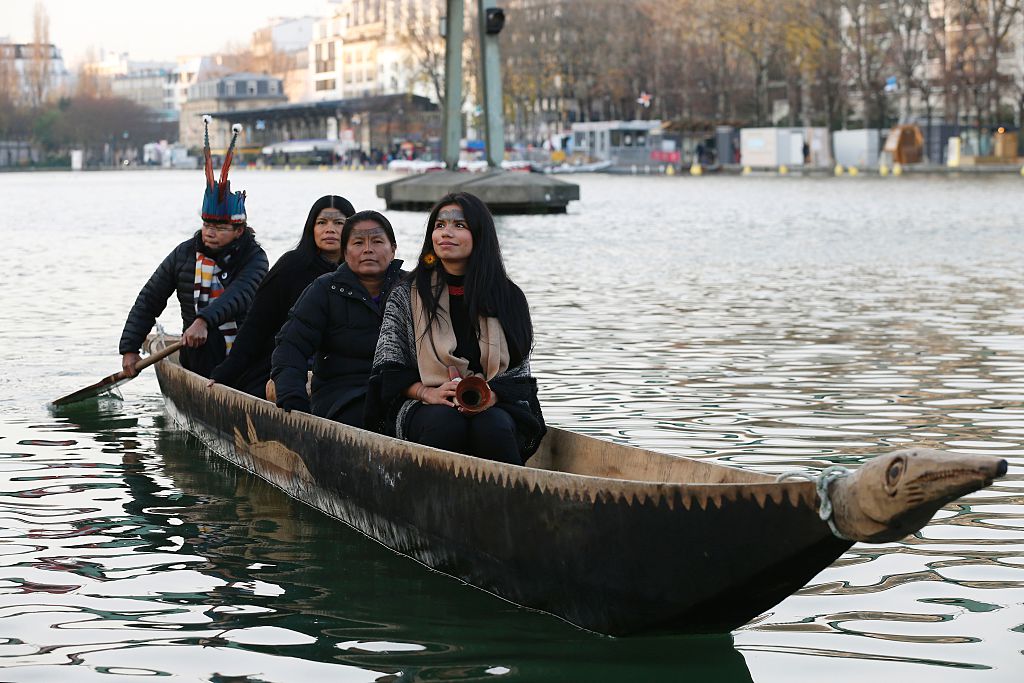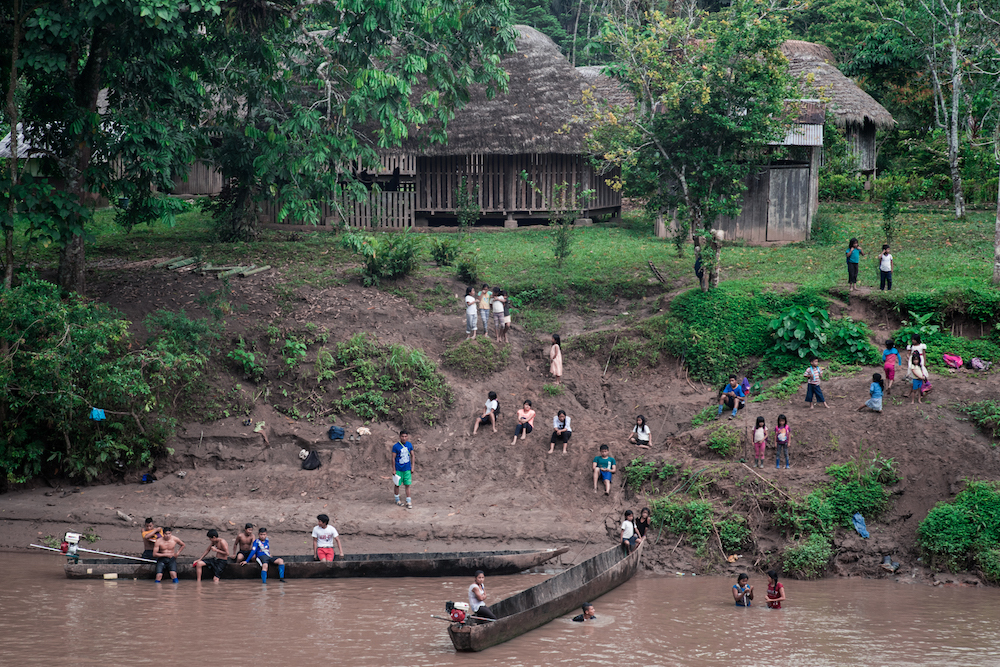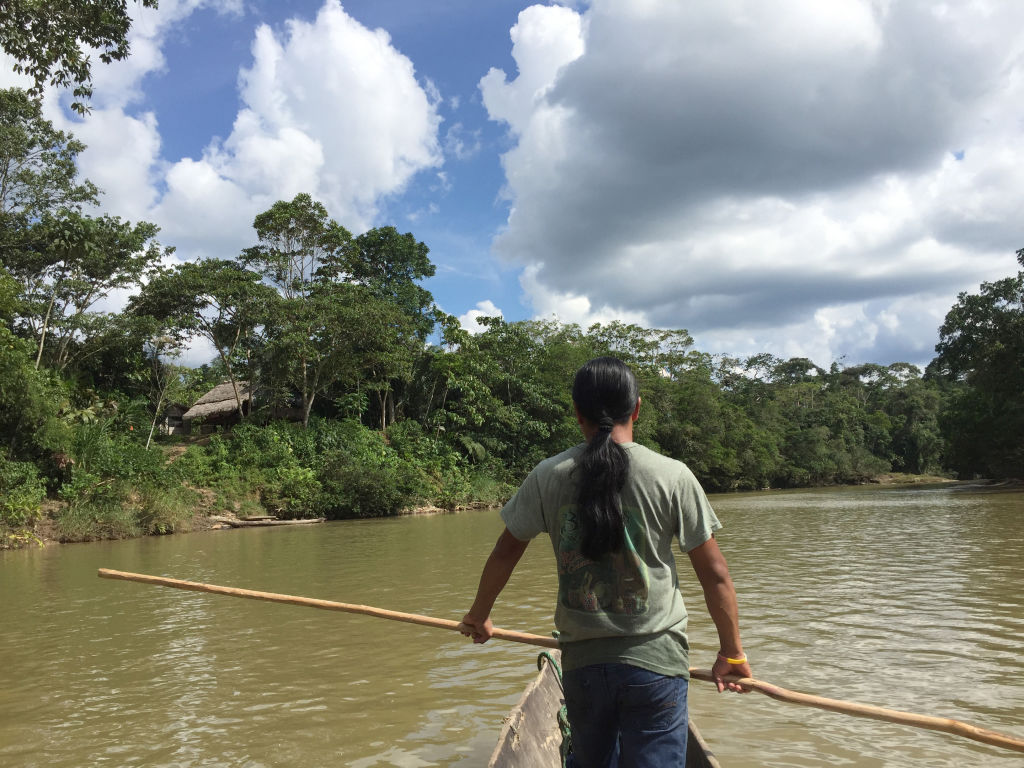The Fight to Secure Rights for Rainforests
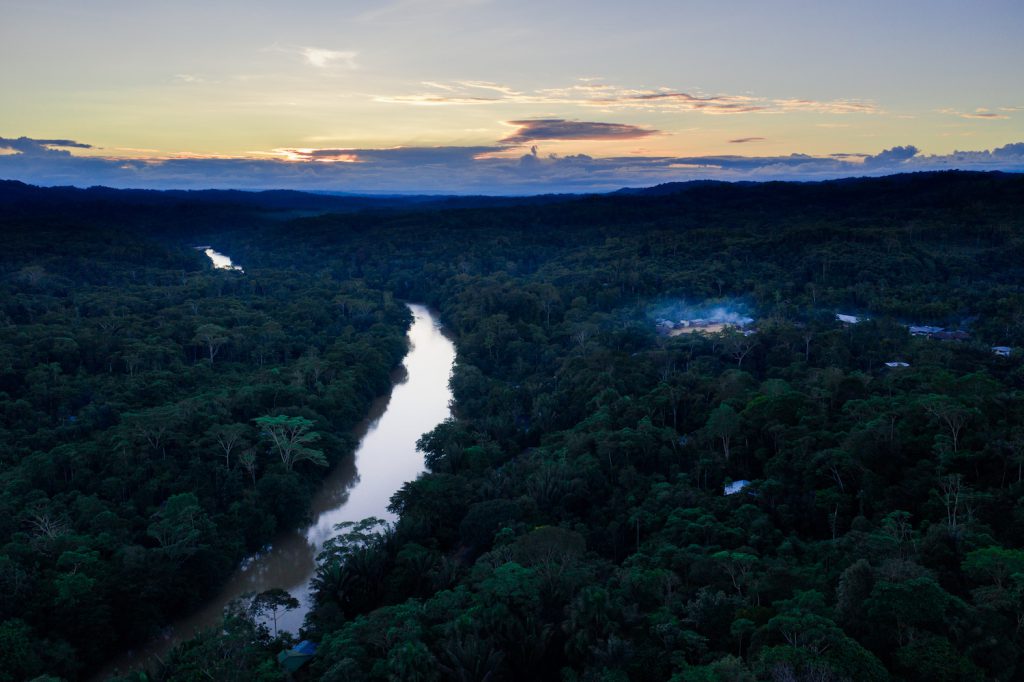
The Sarayaku territory in Ecuador is a 500-square-mile roadless jungle reachable only by helicopter, small aircraft, or a full day’s canoe trip on the Bobonaza River. For outsiders, opportunities to connect with this community of about 1,200 people are rare.
So, when anthropologist Eduardo Kohn received a shaky Skype call out of the blue from Sarayaku President Félix Santi, whom he’d never met, Kohn dropped everything. Santi said he was on his way to Puyo, the nearest town to their territory. Kohn, who had recently arrived in Ecuador for a yearlong sabbatical, hopped on a bumpy five-hour bus ride from Quito the next morning to meet him there.
It was October 2015, just weeks before the big United Nations climate change meeting that would ultimately yield the Paris Agreement. After decades of bravely staving off oil company incursions on their land and spearheading an Indigenous resistance movement in Ecuador, the people of Sarayaku wanted to make their predicament more widely known. Sitting behind a desk in his office at the Sarayaku’s Puyo headquarters, Santi, a serious, self-possessed man in his mid-30s, shared with Kohn an ambitious plan.
A 30-foot canoe carved from a cedar tree was already en route to France, and a delegation of Sarayaku leaders would follow. When heads of state from nearly every nation convened in December, the Sarayaku leaders would launch their canoe into a Parisian canal, bringing their struggle for the Amazon to the world stage.
But the Sarayaku community also wanted a written document that would resonate across cultures, geography, and radically different perspectives. That’s why Santi had summoned Kohn, a professor at McGill University whose writings explore the connections between humans and other species. Working together in a small team that included other Sarayaku leaders, they quickly finalized the Declaration of Kawsak Sacha, a term that in Kichwa means “sentient forest.”
Kawsak Sacha is an expression of the Sarayaku community’s worldview, which is Animist, based on the principle that not only people but plants, animals, and even rocks are sentient, knowing beings. Kohn’s academic writings, meanwhile, derive largely from European and American scholarship. Yet by different pathways, Kohn and the Sarayaku had come to similar conclusions. Both believe that the future not just of the Amazon but of the planet depends on reimagining our connection to nature. They also share a conviction that this message can’t stay hidden in the jungle or in the pages of a book. Political action is necessary.
The 2015 climate summit raised the Sarayaku community’s profile—they delivered their Kawsak Sacha message directly to French President François Hollande—but sympathy from abroad did not readily translate into change at home. Now, however, thanks to a team of lawyers that has long been seeking justice for the people of Sarayaku, their case is about to reach Ecuador’s highest court.
Sometime soon, the court will consider whether, based on the rights of nature already enshrined in Ecuador’s constitution, the Sarayaku rainforest is entitled to legal rights of its own, different from but comparable to the ones people possess. Kohn has agreed to offer expert insight for the court. His role is to translate Sarayaku spiritual principles into an argument that aligns with Western ideas.
“We have to put things in terms the judges can understand. At the same time, we want to change how they understand things,” Kohn says. “We’re trying to bring different kinds of worlds together to see that they’re actually part of the same thing. I think about anthropology as a kind of shamanism.”
Ecuador is a second home for Kohn. It’s where his grandparents settled when they fled Europe to escape the Holocaust and where his parents grew up. Kohn’s regular visits to Quito during his New Jersey childhood had a magical feel, like entering another world.
His maternal grandmother was an amateur archaeologist, and his grandfather a pharmaceutical chemist intrigued by rainforest-derived compounds. Their home, with secret rooms connected by hidden staircases, was filled with colonial and Indigenous art, historical maps, and books on dart poisons and viper venom. As a young man, Kohn began making his own trips to the rainforest, spending months exploring the ethnobotany of medicinal plants for his Oberlin College honor’s thesis and returning many times in subsequent years as a Fulbright scholar and then a doctoral student.
Before Kohn, now 53, met with Sarayaku leaders, he had rocked the field of anthropology with a book whose very title, How Forests Think, may cause some readers to do a double take. His assertion that animals, and even plants, “think” can be so unexpected it’s almost jarring.
“Yeah, it’s a jab, of course it is. It’s a jab right into the solar plexus. It’s, like, hey, hey, hey,” says Agustín Fuentes, a Princeton anthropologist and colleague of Kohn’s whose research also focuses on the relationship between biology and culture. “And he knows it.”
If Kohn had asserted that other creatures have feelings, it would be “a much easier position to take, because more people will agree with that,” Fuentes says. For example, scientists have made the case that elephants, ducks, and dogs may grieve. But thoughts? What does Kohn even mean by that?
“We have to put things in terms the judges can understand. At the same time, we want to change how they understand things,” says anthropologist Eduardo Kohn.
Early in the book, Kohn describes settling down to rest under a thatched lean-to in the jungle when his friend Juanicu, a Runa hunter, warned him: “Sleep faceup!” If a jaguar happens by and “sees you as a being capable of looking back—a self like himself, a you—he’ll leave you alone,” Kohn writes. But if he does not see your eyes and “should come to see you as prey—an it—you may well become dead meat.”
For Kohn, this insight was a revelation. It implies that humans are not the only ones who interpret the world. A jaguar analyzes its surroundings in its own jaguar way. What’s more, the jaguar’s understanding of the world, its “thoughts,” can have life-or-death consequences for people. Kohn believes this observation shakes the very foundations of anthropology.
Twenty years ago, when Kohn was still a graduate student, he went to see the legendary anthropologist Clifford Geertz. Geertz was known for “thick description,” the idea that anthropologists must gather a wealth of details to fully understand another culture’s practices. Kohn had recently returned from doing this kind of deep fieldwork in Ecuador, where he had lived for long stretches with the Runa people.
Kohn had begun to suspect that even though anthropology was developing a deeper appreciation of culture across human societies, the field still hadn’t gone quite far enough—because it excluded the meaning-making pursued by other species.
“I’m in the Amazon, and it is very confusing,” he confided to Geertz, “because people are talking to animals … and animals are talking to them.” The Runa didn’t just think they were communicating with animals, Kohn continued. They actually were. Other species, including insects, express themselves, consciously or not, through alarm and mating calls, coloration, swarming behavior, and more. If anthropologists consider only the human side of these relationships, aren’t they missing half the story?
Kohn got no satisfaction that day. “That’s not what’s important here,” Kohn recalls Geertz, who died in 2006, saying. “You just don’t ask those questions.”
But Kohn refused to stop asking those questions. The result was his 2013 book How Forests Think: Toward an Anthropology Beyond the Human, in which he argues that all life-forms engage in thought. Through evolutionary dynamics, for example, plants, though lacking a recognizable brain, thrive, reproduce, and at times effectively outmaneuver other species.
Other scholars were also deflating human exceptionalism, but Kohn’s ideas resonated widely. How Forests Think won the prestigious Gregory Bateson prize, was translated into nine languages, and opened up new avenues of inquiry for anthropologists studying everything from wild horses to microbial life. The book even inspired a symphony that debuted at the Lincoln Center.
Kohn is convinced that anthropology, and Western thought in general, has artificially isolated humans from the natural world, with disastrous consequences. Instead of perceiving other life-forms as part of a shared reality, the way many Amazonian peoples do, many societies treat them as consumable resources, and “that division is coming back to bite us,” Kohn says.
Fossil fuels were once living creatures, he points out. By digging them up and burning their bodies, humanity has both enabled modernity and cursed it. “The whole climate crisis, one could argue,” Kohn says, “is the product of people increasingly treating nature as a thing rather than a set of relationships.”
But if Westerners begin to attribute thought, a higher-order function, to nonhuman life-forms, these beings may seem more valuable and worthy of protection. “If a forest is sentient, then it can’t exactly be understood as property, right?” Kohn says. “So, all sorts of things change.”
About 20 years ago, as documented in the award-winning film Children of the Jaguar, workers from the Argentinian petroleum company Compañía General de Compustibles (CGC) landed by helicopter without permission on Sarayaku territory. The workers laid down some 3,000 pounds of explosives in a grid pattern over several square miles, a standard technique for locating underground oil deposits. The Sarayaku tried to resist, but the oil workers were accompanied by members of the Ecuadorian military, brandishing guns.
Since then, Ecuador has made some progress to protect the Amazon—at least on paper. In 2008, it became the first country to recognize the rights of nature in its constitution. Yet the government continues to promote drilling, logging, and mining, and has opened bids for oil exploration on 11,500 square miles of rainforest, including nearly all of the Sarayaku territory.
In 2012, a team led by human rights lawyer Mario Melo won a huge victory for the Sarayaku community when the Inter-American Court of Human Rights ordered Ecuador to remove the explosives. But the government has not complied. The pentolite remains dotted over Sarayaku land, and the threat of being injured by an explosion prevents people from enjoying large tracts of the forest.
Recently, Melo, who is the dean of the law school at the Pontificia Universidad Católica del Ecuador, received word that the Constitutional Court of Ecuador will soon hold its first hearing on the case. Melo’s team will ask the court to make Ecuador remove the explosives. But they will go further, calling on the court to realize the nation’s avowed ecological principles by granting rights to the Sarayaku forest itself. If they succeed, the case will set a precedent for future rainforest protections by affirming the Amazon’s inherent right to exist unmolested.
“The beings of nature are connected,” says Sarayaku leader Patricia Gualinga.
Many Amazonian peoples share a conception of the sentient forest, Kohn says. What’s distinctive about the Sarayaku community is their melding of traditional ways with cyberactivism, and that they have taken the fight for their forest to new levels, positioning it within the context of larger political currents, including the global climate crisis.
“It would not be a victory if it were only about Sarayaku,” says Sarayaku leader Patricia Gualinga, reached by Zoom from Puyo. “It would not make sense, since the Amazon is not only in Ecuador, it is in nine countries, and if the Amazon disappears, it affects the desert, it affects [other] places.”
“The world is connected; the energies are connected by invisible threads. The beings of nature are connected. Nothing is separate,” Gualinga adds. “Their separation begins to generate death, and that, I think, is very clear.”
In recent years, several natural features, including the Ganges River in India, the Atrato River in Colombia, Te Urewera in New Zealand, and Lake Erie in Ohio, have been granted legal rights. “This is very much a rising trend,” says Cesar Rodriguez-Garavito, a co-director of the Center for Human Rights and Global Justice at the New York University School of Law, who will provide an expert opinion on the rights of nature to the court in the Sarayaku case.
The Sarayaku have long been among the leading voices in the rights of nature movement, Rodriguez-Garavito says. Two decades ago, when Westerners encountered this way of thinking, it “fell very much on deaf ears,” he adds, “because it sounded just ridiculous, right?” But “fast forward to 2020, and now we have [non-Indigenous] scientists making the same claims.” Ecologists are beginning to discover surprising interconnections, both among organisms and among far-flung ecosystems. “Many of these arguments being made are actually underpinned by the ecological dynamics and the biology,” says Fuentes, the Princeton anthropologist.
For example, some Western scientists now believe that trees send out chemical signals to warn one another about insect pests and that healthy trees nurse sick ones through their conjoined root systems. On a global scale, windblown dust from the Bodélé Depression in north-central Africa blows all the way to the Amazon and seeds the rainforest with the minerals it needs to support its rich panoply of life.
“This is what the Sarayaku have been saying all along, that everything is interconnected,” says Rodriguez-Garavito. “This is not religious belief. This is not just a hunch.” But because such processes are invisible, until recently, Western science had largely overlooked them.
For the Sarayaku community, aggressions toward the forest can be personally devastating. In 2003, CGC oil company workers from a different Indigenous group cut down a 300-year-old cannonball tree and replaced it with a heliport. A Sarayaku holy man named César Vargas, who used this medicinal tree in his rituals, passed away soon after it was felled, as did his wife and their two sons. Deeply shaken, Sarayaku community members believed the family had died of sadness.
In interviews conducted at the time by investigators from the Latin American Faculty of Social Sciences, two Sarayaku officials said the CGC had intentionally targeted the tree—knowing it was sacred to the Sarayaku people—as part of an effort to foment hostilities between various Indigenous groups and sap the Sarayaku people’s spirit. “It was a very violent thing, and it was effective,” says Kohn. “It had an effect of weakening those ties with the forest.”
Western sensibilities may not easily grasp how the loss of a single tree could be so catastrophic. In their interviews with the social scientists investigating the incident, Sarayaku leaders explained that this tree had an essence, akin to a soul, and that it expressed itself in Vargas’ dreams and was an intrinsic part of his life, the community, and the network of beings that sustain the forest.
“When we go to a national park, we can feel very gratified, it can be very beautiful and enrich us a lot,” lead attorney Melo says. But “the [Sarayaku] relationship is on another level,” he adds. “The people and the forest are really one.”
Kohn, translating for Melo in the interview, elaborates: “When we create a national park, we say, nature’s over there, we are here. We need to protect nature from people, separate it.” But to many Amazonians, he explains, “Nature is not over there. We are part of it, it is part of us.”
